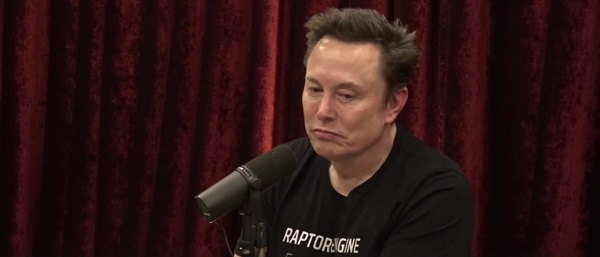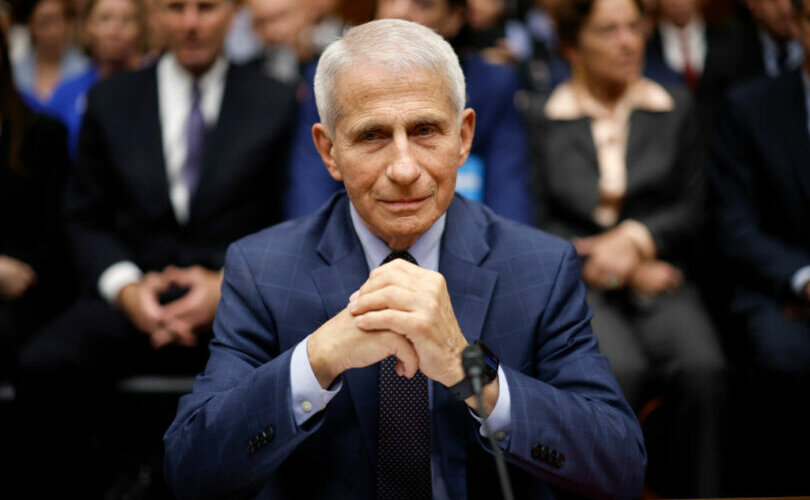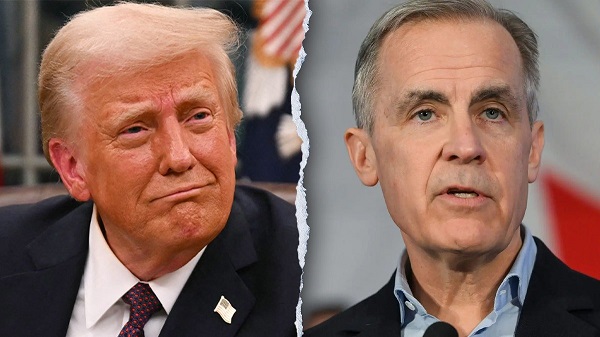International
Is Russia at War With Ukraine, or With the West?

|
German Foreign Minister Annalena Baerbock this week, on entering a “new era of nefariousness”:
I say clearly and across the Atlantic, what is right and what is wrong shall never be irrelevant to us. No one wants and no one needs peace more than the Ukrainians and Ukraine. The diplomatic efforts of the U.S. are of course important here. But such a peace must be just and lasting and not just a pause until the next attack… We will never accept a perpetrator-victim reversal. A perpetrator-victim reversal would be… the end of security for the vast majority of countries. And it would be fatal for the future of the United States.
Baerbock’s declaration that a “perpetrator-victim reversal” (a Täteropferumkehr, I’m reliably informed) would be “fatal” to the U.S. was historic. It was accompanied by a promise that “as transatlantacists,” Europeans must “stand up for our own interests, our own values, and our own security.” Although new leaders are ready to take the reins in Germany, she said, there can be no waiting for the transfer of power. Immediately, “Germany must take the lead at this historic milestone.”
A few years ago Baerbock pleaded for patience with a British conservative who demanded to know why Germany wasn’t providing Leopard tanks to Ukraine.
Now, with Donald Trump cutting off weapons deliveries and shutting down access to ATACMS missiles, Baerbock’s speech is an expression of more enthusiastic European support for continued fighting.
The war in Ukraine is often called a proxy conflict between Russia and the West or Russia and the U.S., but it increasingly looks more like a fight between Baerbock’s “transatlanticists” and those who believe in “spheres of influence.” In preparing Racket’s accompanying “Timeline: The War in Ukraine,” I found both sides articulated this idea repeatedly.
In January, 2017, as he was preparing to relinquish his seat to Mike Pence, Joe Biden alluded to the recent election of Donald Trump in a speech at Davos. Describing the “dangerous willingness to revert to political small-mindedness” of “popular movements on both the left and right,” Biden explained:
We hear these voices in the West—but the greatest threats on this front spring from the distinct illiberalism of external actors who equate their success with a fracturing of the liberal international order. We see this in Asia and the Middle East… But I will not mince words. This movement is principally led by Russia.
Biden even then lumped Trump and Putin together, as enemies of the “liberal international order.” Russian counterparts like Putin and Foreign Minister Sergei Lavrov, meanwhile, spoke of a “post-West world order” where diplomatic relations would be based on “sovereignty” and the “national interests of partners.” These are two fundamentally irreconcilable worldviews. Was conflict inevitable, or could peace have held if Russia didn’t strike in 2022?
There’s no question who invaded whom. Hostilities began in February, 2022 with an angry speech by Vladimir Putin and bombs that landed minutes later in Ukraine. Little discussion of the “why” of the war took place in the West, however.
Phrases like “unprovoked aggression” became almost mandatory in Western coverage. Politico interviewed a range of experts and concluded that what Putin wanted was “a revanchist imperialist remaking of the globe to take control of the entire former Soviet space.” This diagnosis of Putin’s invasion as part of a Hitlerian quest for Lebensraum and a broader return to national glory might have merit, but it was also conspicuously uncontested. A differing article by University of Chicago professor John Mearshimer declaring the crisis “the West’s fault” made him, as The New Statesman just put it, “the world’s most hated thinker.” Few went there after.
Russians and Ukrainians don’t have the typical profiles of ancient warring tribes. They have a deeply intertwined history, with citizens of both countries retaining many of the same customs, jokes, and home remedies, while living in the same crumbling Soviet buildings, with fondness for the same cabbage soup and moonshine. There are huge numbers of mixed/bilingual families and many famous cultural figures (including my hero Nikolai Gogol) are claimed by both countries. They’ve fought before, but what jumped out reviewing this “Timeline” is how much it seemed that these old Slavic neighbors mostly fall out now over attitudes toward the West.
It’s hard looking back not to be struck by the superior tone of bodies like the Organization for Security and Co-operation in Europe (OSCE), whose “reviews” of Ukrainian and Russian elections often read like zoological descriptions of inferior species. Same with a tsk-tsking report by a mission of visiting IMF economists in 2013, who were appalled by Ukrainian energy subsidies that were among of the few popular remnants of Soviet life.
These imperious Western assessments of childlike Slavs, and the panic and shame of some local officials before such foreign judgments, recall familiar satires in Russian literature (The Government Inspector comes to mind). Nationalists in both countries balked at this “advice,” and by the late nineties some came to the conclusion that the cost of cooperation with the West was greater than the benefit. These dynamics accelerated after the Orange Revolution in 2004 and the Maidan events of 2013-2014, which Russians still see as a West-backed coup and the beginning of the current war. Russians will say “first blood” was drawn in military operations against Donbass protesters around the same time. Those in the West will point at the 2014 annexation of Crimea as the beginning of territorial war.
The idea of Germany “taking the lead” in a war to secure the primacy of “transatlanticists” worries me more than trying to pronounce Täteropferumkehr. However, whether or not you think Baerbock is right, and a peace deal now would be a worthless “pause,” depends a lot on how you read this history. What do you think, and why?
COVID-19
COVID virus, vaccines are driving explosion in cancer, billionaire scientist tells Tucker Carlson
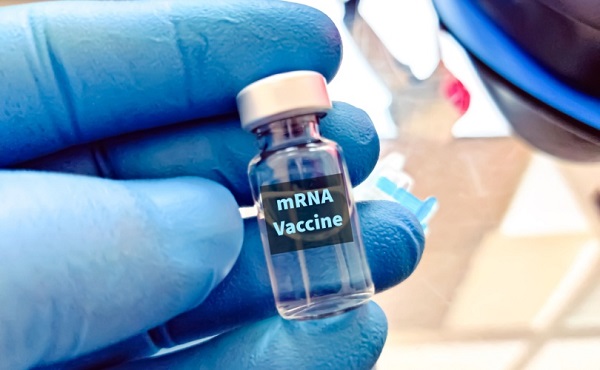
From LifeSiteNews
The spike protein from the COVID virus and shots cause persistent inflammation, which in turn suppresses the immune system, according to the accomplished Dr. Patrick Soon-Shiong.
A billionaire scientist and cancer drug inventor told Tucker Carlson that the COVID virus and mRNA “vaccine” are driving an explosion in cancer among the young and old alike.
Dr. Patrick Soon-Shiong, a transplant surgeon and owner of the Los Angeles Times, recently broke down in an interview how the COVID spike protein, persisting in people’s bodies both from the virus and the mRNA shots, is contributing to unprecedented cancer diagnoses.
Soon-Shiong likened the disturbing rise in atypical, aggressive cancer cases to a “non-infectious pandemic,” now claiming the lives of young people afflicted with cancers highly unusual for their age. He cited the fatal post-COVID case of a 13-year-old boy he had seen with pancreatic cancer usually found in people at least 45 to 50 years old.
He told Carlson how these cases were concerning him so much that he called a doctor friend whose experience mirrored his own. Soon-Shiong recounted how his friend told him, “Patrick, I’m now seeing an eight-year-old, a 10-year-old and 11-year-old with colon cancer … We’re seeing now 30-year-old, 40-year-old ladies, young ladies with ovarian cancer.”
Soon-Shiong explained that the challenge presented by cancer can be distilled into the question of how we can increase or activate the cancer killer cells and decrease or deactivate the cells that suppress the killer cells, which he called suppressor cells.
According to the doctor, what knocks these cells “out of equilibrium” is essentially inflammation.
A mechanism by which inflammation can help contribute to cancer is by flipping infection-killing neutrophils into suppressor cells, when the inflammation is “persistent,” according to Soon-Shiong.
Worse, after 50 years of scientific research and practice, he believes that “everything we’re doing” to address cancer “is tipping the scales towards the suppressor cells.”
To give context to the potential impact of COVID and its “vaccine,” he pointed out that there are cancer-causing viruses, called oncogenic, which persist in the body, thereby creating ongoing inflammation. COVID itself, as well as the mRNA shots created in response to the virus, both produce inflammatory spike proteins, he noted, which attach to blood vessels with ACE-2 receptors, found all throughout the body.
This would explain why after COVID, dysfunction in different organs — from the pancreas to the colon, and the heart to the brain — is being seen all of a sudden, Soon-Shiong continued. “You’ve seen young people have sudden heart attacks all of a sudden. You see young people with pancreatic cancer all of sudden. You see young people’s colon cancer all of a sudden.”
“So is it by coincidence that post COVID infection, post COVID vaccine, we’re seeing all these events where we know the spike protein goes? I don’t think so. I think it’s not a coincidence,” Soon-Shiong said. “So the question is, can we prove, is what I call long COVID virus persisting?”
“And the group at University of California, San Francisco, has now definitively proven that and published that in papers like Nature,” the doctor noted.
He said there is also published research showing that the persistence of the virus, which is likely the reason for “long COVID” symptoms, suppresses natural cancer-killer cells, making them “go to sleep.”
“And that’s why I sort of abandoned everything just to focus on how do we clear the virus, because the answer is to clear the virus from the body, the answer is to stop the inflammation,” Soon-Shiong said.
He has found that the virus persists in the body at least three to four years, and told Carlson he believes it cannot be cleared from a body that is immunosuppressed.
This accords with a Harvard study pointed to by the prolific internist and cardiologist Dr. Peter McCullough, which shows that those suffering from long COVID likely have spike protein from the virus circulating in their bloodstream.
However, according to medical freedom champion Dr. Mark Trozzi and other doctors, there are simple ways people can clear their body of the COVID virus (or shot’s) spike protein, to which Soon-Shiong himself attributes the illness caused by the virus.
Trozzi has shared three methods by which one can help clear out the spike protein and minimize its effects: Accelerating the process of autophagy through intermittent fasting; ingesting Nattokinase, which “digests” the spike protein; and taking substances that block the uptake of the spike protein, such as ivermectin and quercetin.
Soon-Shiong believes the only way to clear the body of the virus itself is to have a “T cell, natural killer (NK) cells,” (a type of T cell), which are white blood cells which kill cancer cells. He attributed the fact that he himself did not suffer from a COVID infection to the manipulation of his own immune system, through what he calls a “bioshield.”
What the bioshield does is “educate your body to have these T cells, called memory T cells, that go and hide in the bone marrow and come out when they need it and kill that cell,” Soon-Shiong said. He told Carlson it was approved for public use in the U.S. in 2024 for bladder cancer.
Asked how we can strengthen our immune system for disease in general, Soon-Shiong said we should seek to “activate” the natural killer cell. This immune cell can be replenished with sleep and exposure to sunlight and can be preserved by avoiding food that has an immunosuppressive effect. This means sticking to natural foods and avoiding processed foods with toxins, such as red dye, according to the doctor.
During his interview with Carlson, Soon-Shiong also discussed how his proposed interventions for COVID were shut down by the FDA, the efforts to find “dirt” on him to prevent him from becoming the head of the NIH, his thoughts on Robert F. Kennedy Jr., the healthcare establishment’s conflicts of interest, and why he decided to buy the Los Angeles Times.
Health
Horrific and Deadly Effects of Antidepressants
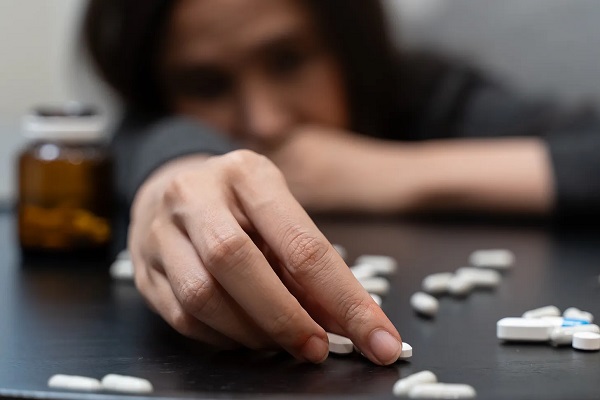
 The Vigilant Fox
The Vigilant Fox
Once you see what else these drugs are doing, you’ll never look at depression “treatment” the same way again.
The following information is based on a report originally published by A Midwestern Doctor. Key details have been streamlined and editorialized for clarity and impact. Read the original report here.
Did you know that SSRI antidepressants INCREASE suicidal thoughts by 255%?
A clinical trial on healthy volunteers found that 2 out of 20 became suicidal after taking Zoloft.
One was literally on her way to kill herself when a timely phone call saved her life.
But it’s not just suicidal thoughts that make antidepressants dangerous.
And once you see what else these drugs are doing, you’ll never look at depression “treatment” the same way again.
Selective serotonin reuptake inhibitors—or SSRIs—are one of the most harmful medicines prescribed today.
And that’s saying a lot because the market is FULL of harmful medicines.
What’s so bad about these antidepressants?
First of all, their use is widespread and frequently unjustifiable.
They promise to be a magical solution to depression and anxiety, but it’s quite the opposite.
In fact, they can cause side effects far worse than what they claim to treat.
SSRIs don’t just dull your emotions, and they don’t alter your brain chemistry for the better.
They literally reprogram your brain.
Between 40% and 60% of users report emotional numbness. Not just negative emotions—all emotions.
Joy, pain, motivation—all of it completely flatlined.
Some describe it as “life without color” or a “zombie-like” existence.
Sure, maybe you don’t feel depressed anymore. But you don’t feel anything at all.
That sounds… terrible.
Depression can be serious, but should we accept emotionless zombies as the alternative?
If you want to dig even deeper into the dark side of antidepressants and why they’re so harmful, check out @Midwesterndoc’s comprehensive report on the subject. And be sure to share this with anyone you know who may be considering starting an SSRI.
And it’s not just becoming an emotionless zombie you have to worry about. The emotional shutdown can lead to something that is much worse than depression and anxiety.
I don’t mean just a little anger here and there.
SSRIs are causing people to commit suicide—and yes, even horrific mass shootings.
And guess what? The FDA knew about it.
Prozac triggers hallucinations, mania, and violence, and the FDA has known all along.
Even animals become aggressive on SSRIs.
But instead of going back to the drawing board, the FDA approved it anyway.
After nine years on the market, 39,000 people reported major psychiatric events. And those are only the people who reported it…
Really makes you question FDA approval, doesn’t it?
Did you know most of the mass shooters we hear about in the news were often on SSRIs?
It’s true.
And the media even reported on it. But then, they stopped.
That’s weird.
So why are we “not allowed” to talk about SSRIs and violence anymore?
It’s pretty simple.
It would blow the lid off one of the most dangerous pharmaceutical cover-ups in modern history.
It would expose the truth that Big Pharma knowingly released drugs that could make people snap and kill other people.
And they just kept selling them anyway.

But the psychotic violence caused by SSRIs is only the tip of the iceberg.
Obviously, not everyone taking these drugs becomes a mass shooter. But that doesn’t mean the other side effects are any less terrible for those who experience them.
SSRIs truly warp your mind, body, and emotions. And sometimes it is irreversible.
The numbers are truly chilling:
→ A 255% increase in suicidal thoughts
→ 30% of SSRI users develop Bipolar disorder
→ 59% suffer long-term sexual dysfunction
With many saying their libido never came back even after stopping the drug.
The science is clear. The harm caused by SSRIs greatly outweighs any benefits they provide.
Talk about depressing…
A 2020 study involving 20 healthy volunteers with zero history of depression or other mental illnesses had shocking results.
They were each given Zoloft.
TWO of them BECAME suicidal.
One of them was even on her way to kill herself when a divinely timed phone call interrupted her plans.
These two study participants were still affected several months later. They were actually questioning the stability of their personalities.
This doesn’t sound like a magic solution. This sounds like torture.
Speaking of stopping SSRIs—good luck!
They are highly addictive.
And it’s not just physical addiction. It’s neurological.
And because of what they do to the brain, it can take years to step down the dose and wean off of them. Years!
Withdrawal symptoms include things like:
– Brain zaps
– Panic attacks
– Suicidal spirals
– Derealization
And these symptoms can last weeks, months, or even years.
It’s not uncommon to fail and continue taking them because the withdrawal is just that bad.
A 2022 review found that 56% of users who tried to stop SSRIs experience withdrawal symptoms, and 46% describe it as severe.
Psychiatrists mislabel it as a “relapse” and prescribe even more drugs.
The system is set up to trap you. There’s no exit.
And the most vulnerable groups?
Pregnant women and children.
Despite strong evidence linking SSRIs to birth defects, premature birth, and newborn death, the FDA still endorses their use during pregnancy.
One study showed a six times higher risk of pulmonary hypertension in newborns.
Another study showed that SSRI babies lost height and weight in just 19 weeks.
This isn’t good.
SSRIs are being pushed on everyone. Especially vulnerable people like foster kids, parolees, prisoners, and elderly nursing home residents.
And in many of these cases, there is no real ability for them to say no.
That’s not mental health care. That’s drugging people.
The industry tells us SSRIs are “fixing a serotonin imbalance.”
But that’s a lie.
There’s no solid evidence that depression is caused by low serotonin.
So what’s the real mechanism at play here?
SSRIs alter brain wiring. And obviously not always in good ways.
SSRI users describe feeling like their “personality changed” after starting the drug.
The reports are endless and absolutely chilling.
Some were left numb for years. Others became aggressive, impulsive, or dissociated from reality.
Many say they don’t recognize who they became after taking SSRIs.
Excuse me… what?!
And of course, patients and their families are rarely warned about these effects.
Most say they were never told about the risks. There was no informed consent.
How can you not inform depressed people that their medication might make them suicidal? How is it even possible that we can be asking that question?
They experienced these things and talked to their doctors.
They were gaslit every step of the way.
If you or someone you love is taking SSRIs or is considering taking them, I urge you to read the full report from A Midwestern Doctor
How many more people have to suffer before this ends?
How many more people who reach out to their doctor because something is off and they’re looking for help are going to be hurt, sometimes permanently?
It’s time to expose the cover-up and end Big Pharma’s abuse and gaslighting once and for all.
RFK Jr. is right—this could finally be the turning point.
For 40 years, this tragedy was hidden behind slick ads and corrupted science.
But now it’s in the light and MAHA is ready to fight.
If you know anyone considering starting an SSRI, be sure to forward them this information. Because if you wait until after, it might be too late.
Thanks for reading!
This information was based on a report originally published by A Midwestern Doctor. Key details were streamlined and editorialized for clarity and impact.
-

 2025 Federal Election2 days ago
2025 Federal Election2 days agoMark Carney To Ban Free Speech if Elected
-

 2025 Federal Election1 day ago
2025 Federal Election1 day agoPPE Videos, CCP Letters Reveal Pandemic Coordination with Liberal Riding Boss and Former JCCC Leader—While Carney Denies Significant Meeting In Campaign
-
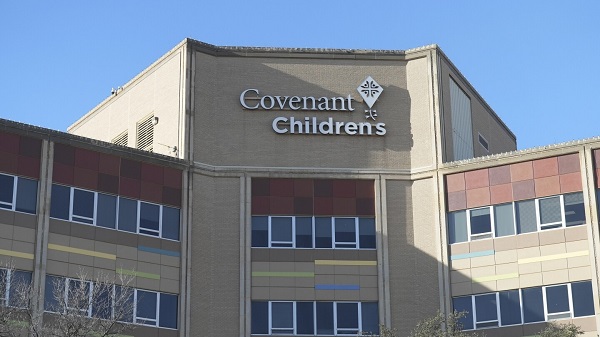
 Health2 days ago
Health2 days agoExpert Medical Record Reviews Of The Two Girls In Texas Who Purportedly Died of Measles
-

 2025 Federal Election2 days ago
2025 Federal Election2 days agoTrudeau and Carney Have Blown $43B on EVs
-

 2025 Federal Election1 day ago
2025 Federal Election1 day agoNo Matter The Winner – My Canada Is Gone
-

 Alberta24 hours ago
Alberta24 hours agoProvince to expand services provided by Alberta Sheriffs: New policing option for municipalities
-

 2025 Federal Election22 hours ago
2025 Federal Election22 hours agoASK YOURSELF! – Can Canada Endure, or Afford the Economic Stagnation of Carney’s Costly Climate Vision?
-

 Alberta21 hours ago
Alberta21 hours agoMade in Alberta! Province makes it easier to support local products with Buy Local program







